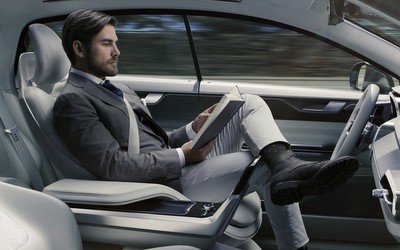
Autonomous vehicles may ease common problems of suburban life such as deliveries, grocery shopping and going to the city for work or leisure. The new technology will probably decrease the cost of deliveries and will facilitate driving for long distances or in intense traffic. At the same time, urban living will become easier as well, since car ownership is expected to decline in a future where driverless car fleets are available at any time to address specific transport needs.
Sharing economy
Therefore, according to Slate, we are faced with two possibilities for the future, if suburban life becomes more attractive and autonomous vehicles are sold at a reasonable price, people will still live in the suburbs, own a private car, and commute to work every day. Thus, the number of cars on the road won’t decrease; the only change will be the fact that humans won’t be driving them. Considering that society’s notion of status and convenience is still related to ownership and to having private space, the idea of having your very own driverless car is tempting.
However, if people’s values change in the near future and we fully embrace the idea of actually sharing things, then driverless cars may be a successful component of the mobility solution. In this scenario it is possible to contemplate a future where autonomous car fleets are shared by several users simultaneously, with vehicles optimising routes to achieve the best use of resources, positively contributing to city transit.
There are various articles celebrating the sharing economy and how it is shifting people’s behaviour. So, the change is already starting. There are some remaining questions, though: are the majority of people ready to not own their car? Not having the privacy afforded by their own vehicle? Where they can leave their gym bag in the trunk, the kids’ favourite toys available and their preferred music playlist ready? It seems that these are small benefits compared to the potential positive effects to mobility of a shared autonomous vehicle fleet. Nevertheless, humans tend to be incredibly egocentric sometimes when deciding between personal and community gains.
The decision of buying a house
Other aspects need to be considered in this evaluation. According to Planetizen, it’s not possible to leave out of the discussion the fact that the decision of buying a house is complex with several aspects involved. Not only the commuting time and transport options but also other factors such as affordability, schools and the neighbourhood characteristics need to be considered.
At least in the USA, a shift in buyers’ preferences is being noticed from single detached houses in the suburbs to properties in walkable and accessible areas. People choose to live in those areas to avoid spending a long time commuting and using that extra time on pleasure activities. Therefore, the advent of autonomous cars probably would not eliminate the desire to be able to use time freely. In driverless cars, passengers will have the possibility to enjoy the travelling time to work, watch a movie or even sleep. However, they will be limited to activities that can be done inside a car, not having total freedom of choice.
In addition, autonomous vehicles won’t surge in an information vacuum. We have been discussing the pros and cons of this technology for several years now and will continue to do it in the future.
There are still many perspectives to be analysed and this discussion is certainly not over. Besides the articles quoted in this post, we came across other interesting points of view about driverless cars, check the links below:
Winners and losers in the race for driverless cars
Apple, Google, Tesla and Uber: 99 Ways Self-Driving Cars Will Totally Change Everything…
Related posts:
What does an autonomous future look like?
Image Source: Volvo
